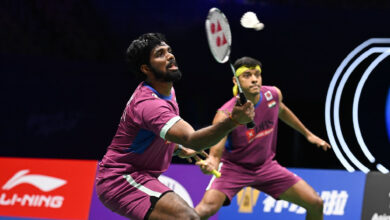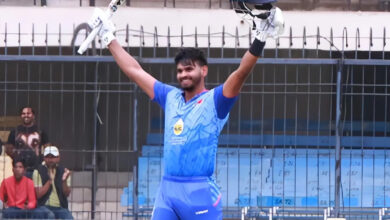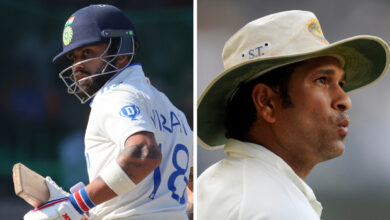Why six hitters alone can’t win the T20 World Cup trophy

For one night at the Eden Gardens, Carlos Brathwaite was the Hercules of cricket. A metaphor of the blazing power of six.
The echoes of his four sixes could be heard far and wide. A month later, the cricketer who once ran a sports shop to keep his cricketing career afloat and hopped to Dublin so that he could at least make some money playing cricket and coaching children, fetched Rs 4.2 crore, 13 fold his base price in the Indian League auction, and had advertising giants queuing up. Other franchises tried to discover or manufacture Brathwaites of their own.
Six became the inflation-proof currency of the game and the sultans of six the nouveau riches. The humbler methods of the 2016 edition’s highest run-getter, Virat Kohli, was ridiculed. Singles and twos, threes and fours would never win games, flowed the narrative arc. The next step in the T20 evolution seemed to a team full of specialised six-hitters.
But the six-hitter boom, like many other booms in the sport, soon burst as wisdom dawned: They win you games, but it’s the steadier players that win you tournaments.
Every team needs a power-hitter but also need the grisly accumulators, the four-hitters, the all-weather men, and the colossus of consency. The latter is an understated virtue in this format, but behind every tournament success, there has always been a consent batter.
Gujarat Titans, last edition’s IPL champions, had David Miller and Hardik Pandya. Both are efficient six-strikers, but that’s not the only layer of their game. Pandya, incidentally, logged in just 12 sixes in 15 innings, and hoarded his runs at a not-too-formidable strike rate of 131. Among the 10 teams, Gujarat hit the fewest maximums (79).
Roll back the pages of the T20 World Cup. It’s the more rounded players that have dragged their teams throughout the tournament to glory. The highest run-getter of the inaugural edition, Matthew Hayden struck 10 sixes in six games—most power-hitters hit those in one game. The second highest run-getter and the star of the final, Gautam Gambhir slammed just five across seven outings, one less than what his colleague Yuvraj Singh managed in a single Stuart Broad over. Yet, both Hayden and Gambhir scored their runs at a strike rate of 144 and 130. That same tournament, Sri Lanka’s styl Mahela Jayawardene hit just four sixes but still coaxed his runs at a strike rate of 150. Another not-so-natural six-hitter Mishab-ul-Haq nearly won Pakan the tournament, hitting just nine sixes in seven games, but still strumming along at a strike rate of 139.
A legitimate line of argument knocks in. Those were still early days of T20 cricket. The game has evolved at a petrifying pace in the next 15 years. To bolster the contention, the average number of sixes per game has leapt off. But the g, and paradox, is that it’s not the specialised six-hitters but the standard batsmen who are thriving and influencing the games.
The case-study of Babar and his opening partner Mohammad Rizwan is illustrative. Babar cleared the ropes only five times in the entire tournament; Rizwan’s shots sailed over the ropes 12 times. Yet, the latter’s strike rate was only smidgeon better than that of Babar (127.72 to 126.25). Then defending champions West Indies were packed with six-emitters, yet they ended up winning just one of their five games. One of the most influential batsmen of the tournament, Kane Williamson, just struck five sixes.
So it’s not six-hitting alone that wins games, but a combination of factors. Striking sixes is just one of those. On slightly difficult tracks and against imposing bowlers, where a robust technique and capacity to locate gaps and accumulate runs at low-risk are valued, the gifts that many power hitters lack, the stock of high-class anchors shoot up.
They would be doubtless invaluable in Australia, where the dimensions of the ground are larger than those in Asia. The ropes are harder to clear and there would be lots of twos and threes to be run. Some of the ground have slightly below-par average total. For instance, the average first-innings score in Sydney is 160 and the second innings, it is 140. The corresponding numbers in Melbourne are 139 and 127; in Perth 157 and 154; Brisbane 165 and 161. Only thrice in 55 games has teams crossed 200.
Incidentally, none of the current top 10 batters in T20 cricket, helmed Mohammad Rizwan, are unbridled six-hitters. Rather, they are a blend of all and those more versatile than mere six hitters. Apart from Suryakumar Yadav, all of the top-five are all-format batters as well.
The script has not been vastly different between 2007 and 2021 either. Some of the game-changers in this span have not been mere six hitters. For example, Tillakaratne Dilshan, the chief batting force behind Sri Lanka’s run to the final, scored 303 runs (the highest run-getter in the tournament) at a strike rate of 144, but heaved just three sixes. His opening partner Sanath Jayasuriya hit twice as many, but at his tournament strike rate was 115. Other luminaries overs the years included Jayawardene, Kevin Pietersen, Mike Hussey, Kumar Sangakkara, Kohli, Azam and Marlon Samuels, a bunch of batsmen who rattled up high strike rates in spite of not looking to hit a six every ball. Pietersen, in fact, struck one six every 26 balls, as opposed to Chris Gayle who has blasted every 11th ball he has faced in T20is for a six. Yet, Pietersen’s strike rate in T20i is 141; Gayle’s 137. The myth of six is debunked.
Several supposedly steady players have, interestingly, better strike rate that six-hitters. Kohli, for instance, strikes at 138 runs per 100 balls, which is better than Rovman Powell (135), Chris Gayle (137) and Eoin Morgan (136) among others.
Hitting six is an asset indeed, no stroke has better value, but that should not be the only facility. A big criticism that dwells on the likes of Brathwaite and the ilk is their woeful consency. Brathwaite’s Eden Gardens-like nights arrived few and far between. His credit ran too low that the last time he played for the West Indies was in 2019. His stocks plummeted too low that he went unsold in the 2020 auction and has never been considered any other IPL franchise since. The numbers justify—for all his six-hitting dazzle, he averages 14.76 in 41 T20is and 15.91 across 238 T20s.
So have been a slew of others. Like Australia’s Chris Lynn (19.40), Andre Russell (19.50), though he has repurposed into a bowling all-rounder, and Pakan’s Asif Ali (15.3) to name but a few high-profile six-hitting wonders who shine sporadically. India, smartly, resed the temptation to pack their squad with Rahul Tewatia, as uninhibited a six-hitter as they come. Perhaps, inconsency is an occupational hazard.
Though, on their nights, they look all powerful, such moments come rarely. Most international teams have realised it and are banking on more multifaceted batters. And as a relic stands the imposing figure of Brathwaite, a one-night Hercules. Remembered for a night but not a career.







